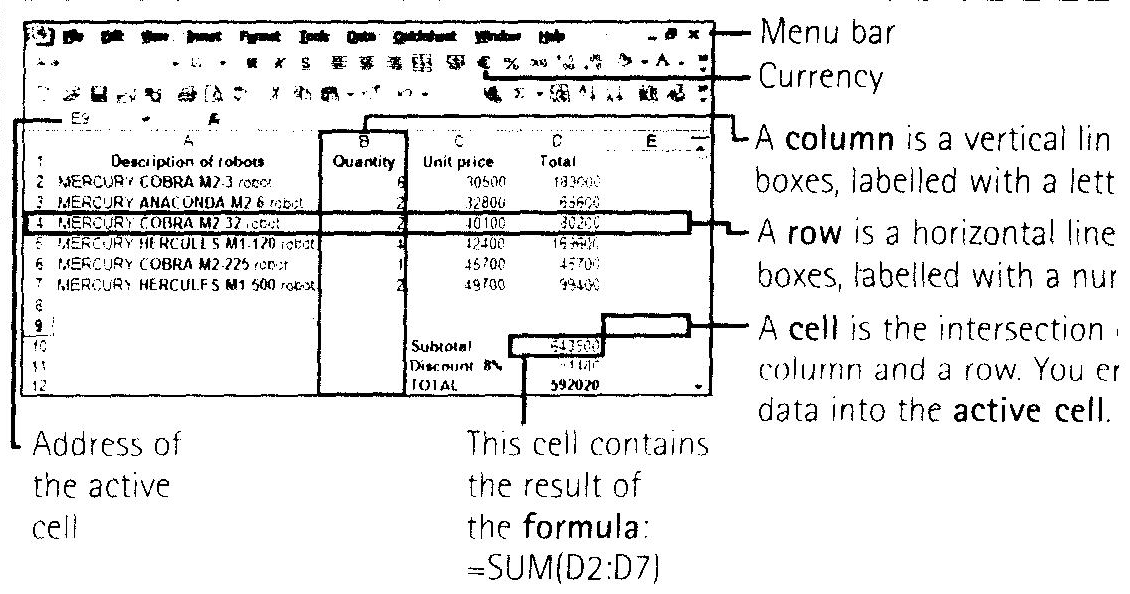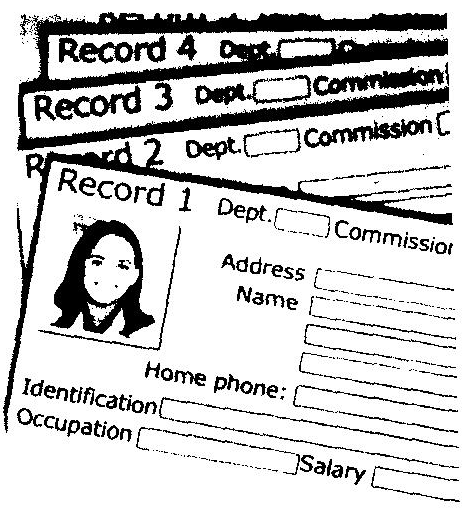
- •Розділ 3. Інтернет. Особливості перекладу інфінітивних зворотів.
- •4.Розділ 4 .Технології. Сучасні технології. Майбутні технології.
- •«Data processing and data processing systems». Часи групи Simple в активному та пасивному стані.
- •Data processing and data processing systems
- •Basic data processing operations
- •Data storage hierarchy
- •6.Translate the following sentences
- •Advantages of Computer Data Processing. Часи групи Continuous в активному та пасивному стані.
- •Advantages of Computer Data Processing.
- •I. Translate the following sentences with the Predicates in the Passive Voice.
- •II. Fill in the verb-forms
- •III Translate the following sentences into Ukrainian, paying attention to the Predicate in the Passive Voice.
- •IV Analyze verb-forms and translate the following sentences. Match the verb-forms with their tenses in Active or Passive Voice.
- •Data Processing in Modern Society. Часи групи Perfect в активному та пасивному стані.
- •1. Read and memorize the following words:
- •2. Words and expressions for the text comprehension:
- •3. Read and translate the given words. Analyses their suffixes and fill in the table according to their parts of speech.
- •5. Read the following group of words and expressions given as the attributes to the word “information”. Make up word – combinations with them to understand their meaning.
- •6. Translate the terms and combinations with them:
- •7. Define the models of the following expressions and match them with Ukrainian equivalents.
- •8. Read the text and try to understand its content as much as possible.
- •Information explosion and data processing in modern society
- •1.Translate the following sentences paying attention to the tenses.
- •2. Translate the following sentences paying attention to the meaning of the verbs in Present Perfect Past Perfect and Perfect Continuous tenses in Passive.
- •3. Open the brackets.
- •Unit іі . A Data Base. Gerund.
- •Learn and memorize the new words:
- •Form nouns by adding the suffix -ance (ence) and translate them into
- •Translate into Ukrainian paying attention to the pseudo-international words
- •Fill in the table with missing parts of speech.
- •Computerizing a data base
- •«The advantages of using electronic files».
- •15. Reproduce the procedure of using Data-Base Management System from the point of view of your own experience. Some additional details should be
- •16. Translate the following sentences into Ukrainian paying attention to
- •17. Translate the following sentences containing Participle II in the function of
- •18. Open the brackets and choose a verb in the required voice: active or passive.
- •19. Read and translate the text 2. Get ready to give some information about the
- •The Advantages of using electronic files.
- •20. Answer the questions: Use the questions as a plant to talk about electronic
- •21. Complete the following sentences.
- •Spreadsheets and databases
- •22. Look at a opposite and find the terms which correspond with these definitions.
- •23. Study the tables and then complete the text below with words from b opposite.
- •24. Look at this form of a music collection. Label the data types with words from b opposite.
- •«Setting up a dbms». Setting up (Data – Base – Management System)
- •1. Read and memorize the following words:
- •2. Name the word – building elements (suffixes, prefixes) and parts of speech the refer to. Translate them into Ukrainian.
- •Setting up a dbms (Data-Base-Management-System)
- •Learning the jargon
- •7. Translate in English:
- •12. Compare your answers with your partner’s in practical task. Point the exact information about typical standards in setting up of a dbms.
- •13. Imagine, you are a computer lab instructor. How would you explain the main stages of setting up a dbm System? Use the starters to complete your ideas:
- •«Using Data Base».
- •Vocabulary:
- •1. Read and memorize the following words:
- •6. Read the following word – combination and pay attention to their meaning.
- •7. Read the text and get ready to dive a characteristics to the data – base and explain its usage. In practical activities. Using Data bases
- •Characteristics of a good database
- •8. Complete the given statements from the text
- •9. Complete the dialogue Choose a partner to talk about using a data – base.
- •10. Find in the text English equivalents to the following word- combinations:
- •11. Read and translate following sentences paying attention to the verb forms in the Active Voice Define the tenses.
- •12.Give the detailed description of using a data base and name its main characteristics.
- •Internet connection
- •Vocabulary
- •«The Internet and modern life ».
- •VI.Answer the following questions.
- •VII.Translate from Ukrainian into English.
- •VIII. Fill in the gaps with the correct word derived from the words in brackets
- •Are you a safe surfer?
- •Stranger Danger On The Net
- •How not to have this happen to you
- •XI.Японці вже придумали, чим замінити Інтернет
- •Render the information about the Internet. Summarise the knowledge you've got from the texts above about the Internet and new technologies. Make the situations of your own. Work in pairs.
- •XII. Read the problems suggested.
- •The World of Telecommunications
- •What Is Technology?
- •Technology - Growing Fast!
- •Text 2 Technology - Growing Fast!
- •«Future technology». Future Technology
- •Text 3 Future Technology
- •«Computer generations».
- •«Modern computers».
- •Irc and web chat
- •Instant messaging
- •Video and voice calls
- •Virtual worlds
- •Robots, androids, Al Robots and automata
- •Усні повідомлення-презентації по темі «Computers of future. Computer technologies of future». Grammar Exercises The Infinitive
- •The Participle
20. Answer the questions: Use the questions as a plant to talk about electronic
files.
1. What is an electronic file? Can you give your own definition?
2. What is the function of an electronic file?
3. What are the advantages of electronic files?
4. Are there any disadvantages?
5. What are performance characteristics of electronic files?
6. What rind of work did you perform using electronic files?
21. Complete the following sentences.
1. If you accumulate a large collection of data, you should ….
2. Using electronic files, you can store data ….
3. The next plus is that ….
4. A computerized catalogue is ….
5. The main function of electronic files are ….
Spreadsheets and databases
Spreadsheet basics
A spreadsheet program helps you manage personal and business finances. Spreadsheets, or worksheets, are mathematical tables which show figures in rows and columns.
A cell can hold three types of data: text, numbers and formulae.
F ormulae
are entries that have an equation which calculates the value to
display; we can use them to calculate totals, percentages, discounts,
etc.
ormulae
are entries that have an equation which calculates the value to
display; we can use them to calculate totals, percentages, discounts,
etc.
Spreadsheets have many- built-in functions, prewritten instructions that can be carried out by referring to the function by name. For example, =SUM(D2:D7) means add up all the values in the cell range D2 to D7.
The format menu lets you choose font, alignment, borders, etc.
Parts of a database
Database basics
A database is essentially a computerized record-keeping system.
E ach
unit of information you create is called a record and each record is
made up of a collection of fields. Typically, a single record
consists of a set of field names like: Title, FirstName, Surname,
JobTitle, TelNo and ID. You fill in a form with the relevant
information for each field to add a new record to the database. There
are different data types.
ach
unit of information you create is called a record and each record is
made up of a collection of fields. Typically, a single record
consists of a set of field names like: Title, FirstName, Surname,
JobTitle, TelNo and ID. You fill in a form with the relevant
information for each field to add a new record to the database. There
are different data types.
Text - holds letters and numbers not used in calculations
Number - can only hold numbers used in calculations and reports
Memo - can store long texts
Date/Time - a date or time or combination of both
AutoNumber - assigns a number to each record
OLE Object - (object linking and embedding) holds sounds and pictures
Yes/No - for alternative values like true/false, yes/no, on/off, etc.
Hyperlink - adds a link to a website
Once you have added data to a set of records, indexes must be created to help the database fim specific records and sort (classify) records faster. An index performs the same function as in the back of a book or in a library. For example, if you regularly search your database by surname, the index should be defined on this field.
Relational databases
Two database files can be related or joined as long as they hold a piece of data in common. A file of employee names, for example, could include a field called 'DEPARTMENT NUMBER' and another file, containing details of the department itself, could include the same field. This common field can then be used to link the two files together.
Extracting information from a database is known as performing a query. For example, if you want to know all customers that spend more than Ј9,000 per month, the program will search the name field and the money field simultaneously.
